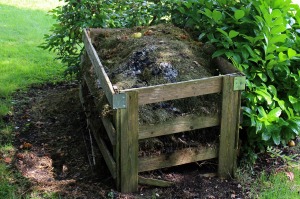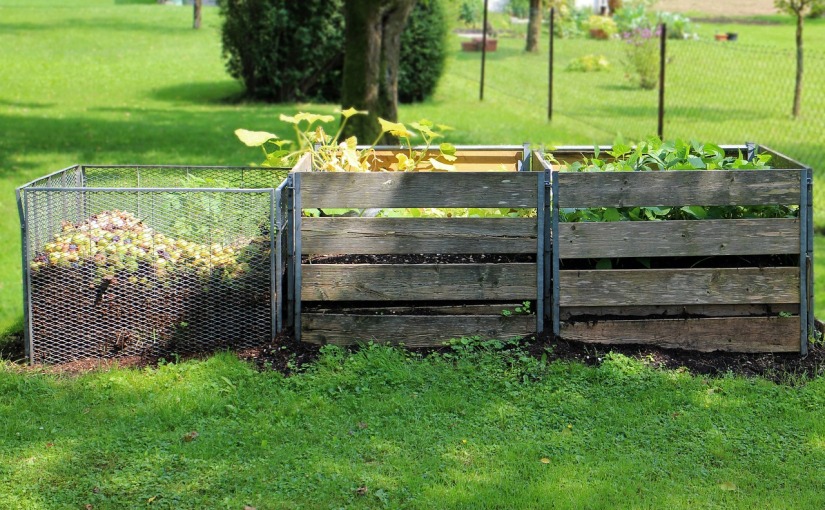With the current state of the environment, recycling has become more important than ever. Composting is a form of recycling that allows you to put food and other household waste to good use and help the environment by keeping these items out of landfills.
What is composting?
Composting is defined as material added to soil in order to encourage plant growth. Compost materials can range from leftover food to yard waste, and when mixed with soil, these materials decompose to create a nutrient-rich, organic substance known humus.
What are the benefits of composting?
 The environmental benefits of composting are enormous. Every year, Americans send 33 million tons of food waste to landfills, where it breaks down and emits methane, a greenhouse gas that is 20 times as potent as carbon dioxide and a significant contributor to climate change. Composting can go a long way toward reducing this waste—some studies indicate that composting can reduce landfill waste by up to 30 percent.
The environmental benefits of composting are enormous. Every year, Americans send 33 million tons of food waste to landfills, where it breaks down and emits methane, a greenhouse gas that is 20 times as potent as carbon dioxide and a significant contributor to climate change. Composting can go a long way toward reducing this waste—some studies indicate that composting can reduce landfill waste by up to 30 percent.
Composting is also beneficial because it reduces the need to buy expensive commercial fertilizers for your garden, encourages the soil to retain moisture, and helps it suppress diseases and pest infestations. In other words, compost helps your garden grow, whether you have a few potted flowers or a large backyard vegetable garden.
What do I need to get started?
Ideally, your compost bin should be 3 feet by 3 feet to allow sufficient room when turning the pile over. Bins are usually available for purchase at local hardware and garden stores, or online outlets like Amazon. Trash cans can also be used for your compost pile in certain cases.
To fill your compost bin, include “brown” material such as leaves, twigs, and branches; “green” waste such as vegetable waste, grass clippings, and coffee grounds; and water to keep the pile moist. The EPA recommends that you have an equal amount of green and brown compost material and that each layer should be alternated. Prior to putting anything in your compost pile, do your best to chop up or shred these materials as much as possible.
Where should I put my compost pile?
The location of your compost pile is important, as putting it in the wrong spot can cause some problems down the road. Situate your compost pile in a shady area near a water source, and ensure that when you add dry material to the compost, you take the time moisten it. If you live in a dry climate, you may need to add water to your compost pile more often. Covering your compost pile keeps it moist and will prevent it from drying out.
What exactly can I put in my compost pile?
 Technically, you can compost anything that is biodegradable or that was recently alive, whether plant or animal-based. However, most sources recommend that you don’t put meat, fish, dairy products, oily or greasy foods, or fats into your compost pile—these foods may cause your pile to smell and attract pests, such as rodents and flies. On the other hand, you may be able to avoid these unwanted pests by securely covering the bin, putting the bin in a hole in the ground, or by thoroughly mixing new scraps with compost already in the bin.
Technically, you can compost anything that is biodegradable or that was recently alive, whether plant or animal-based. However, most sources recommend that you don’t put meat, fish, dairy products, oily or greasy foods, or fats into your compost pile—these foods may cause your pile to smell and attract pests, such as rodents and flies. On the other hand, you may be able to avoid these unwanted pests by securely covering the bin, putting the bin in a hole in the ground, or by thoroughly mixing new scraps with compost already in the bin.
Whether or not you choose to compost meats and dairy, you can always compost fruits, vegetables, beans and legumes, eggshells, nuts, bread, coffee grounds and filters, loose- leaf tea, and tea bags. You can also compost shredded paper, house plants, hay, sawdust, grass and yard trimmings, and fireplace ashes. Be sure that yard trimmings don’t have any chemical pesticides on them, as this could kill off the beneficial microbes in your pile.
What are some common compost problems?
While composting is fairly straightforward, a few problems can arise. One common issue is insects. Bugs are commonly attracted to compost bins—specifically, pill bugs and sow bugs—but neither of these will harm your compost. Ants are almost always an issue, but they are also harmless. However, to drive away these bugs, try to increase the temperature of the pile to 120°F. You can increase the heat by turning and watering the pile regularly.
Another common compost problem, especially in dry climates, is a lack of moisture. This issue is easy to remedy, as all you really need to do is turn over the layers in the pile and water them regularly. The ideal level of moisture is similar to that of a damp sponge, and a light sprinkler is generally more effective at achieving this than a hose. During heat waves or long periods without rainfall, you may have to water your compost pile a little more often.
Another common issue with compost piles is an unpleasant smell. Not all compost piles have a bad odor, but if yours does, fixing the problem is simple. Smelly compost occurs when there is too much nitrogen-rich material in the pile. Another reason for an unpleasant smell may be that you didn’t properly break down the ingredients before adding them to the pile. Alternatively, you may have an overabundance of meat, fish, or dairy food waste in the pile. If this is the case, turn the pile in order to aerate it and release some of the gases that are causing the odor. Going forward, be sure to shred or chop up anything that you intend to compost and mix it in well.
Starting a compost pile does not have to be difficult, and you may find it very rewarding. You’ll reduce your carbon footprint and perhaps even your garbage bill, and your garden will thank you, too.

One thought on “Be Good to the Environment with Your Very Own Compost Pile”
Comments are closed.